Past Continuous LEARNING ENGLISH
10 Sentences of Past Continuous Tense English Study Here
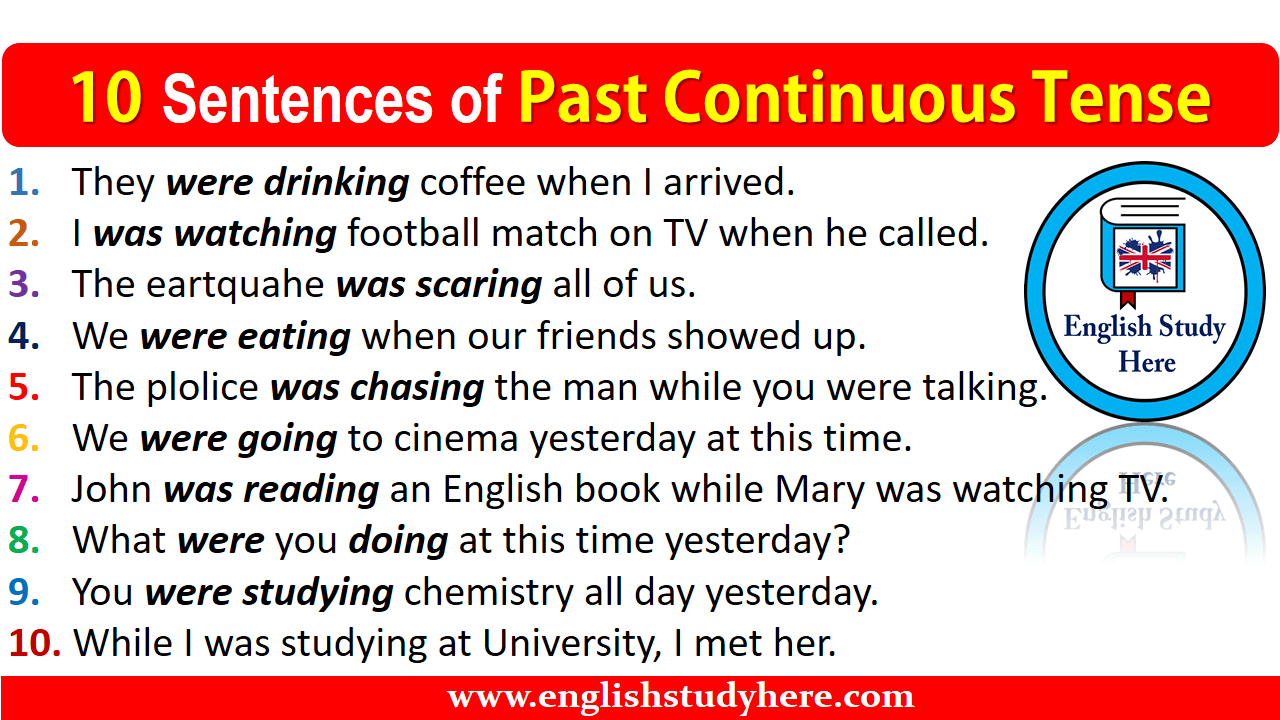
The past continuous refers to an action (or event) that started before now and was ongoing when something else happened - e.g. I was read ing when you called.The formula is: subject + was/were + verb with '-ing '.Signal words for this tense include when and while.. When do we use the Past Continuous? 1. Actions in the past that were interrupted
Past Continuous Tense Pengertian, Fungsi, Materi, Rumus, dan Kalimat

The past continuous tense, also known as the past progressive tense, is a way to talk about ongoing actions or states in the past. To form this tense, we use 'was' or 'were' before the subject, followed by the verb with '-ing' at the end. We often use the past continuous tense in stories or descriptions of past events to show that.
Past Continuous Grammar

Firstly, check that you know how to make the past simple with 'be' (subject + was / were). Then just add verb-ing. Click here to download this explanation as a pdf. Click here for practice on how to USE the past continuous. Here's the positive form: I was sleeping. you were working. he was coming. she was reading 'War and Peace'.
Past Continuous Tense How and When to Use It Grammarly
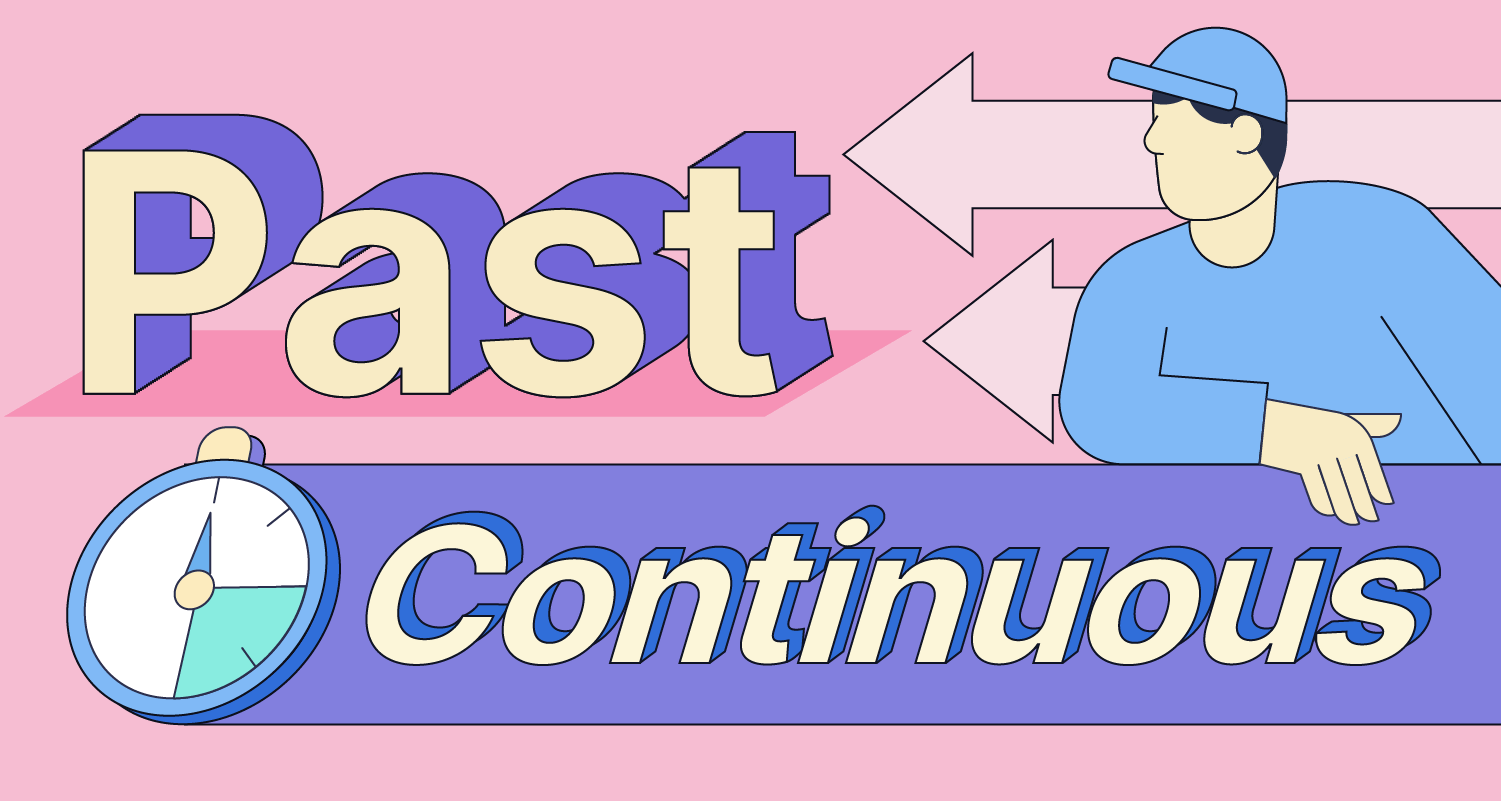
Past Continuous Tips While vs. When . Clauses are groups of words which have meaning, but are often not complete sentences. Some clauses begin with the word when such as "when she called" or "when it bit me." Other clauses begin with while such as "while she was sleeping" and "while he was surfing." When you talk about things in the past, when is most often followed by the verb tense simple.
Past Perfect Continuous Tense in English English Study Page
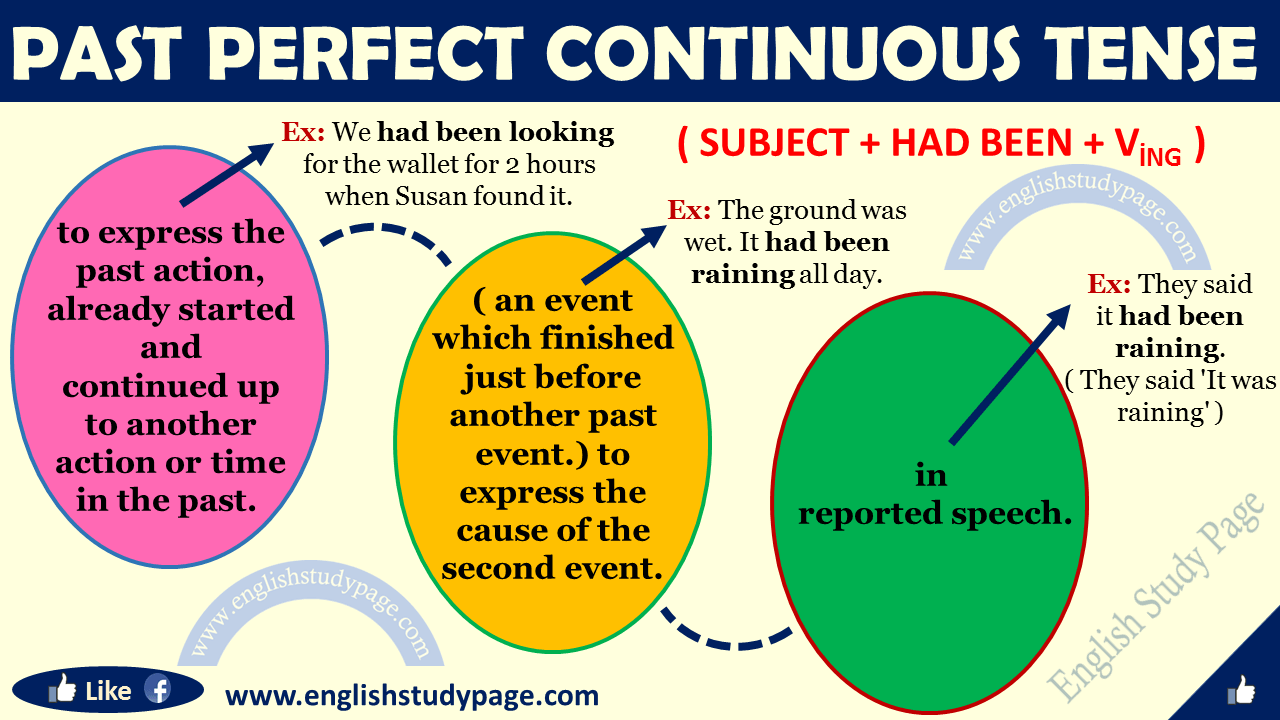
Past simple. The past simple shows us that an action was in the past, not in the present. Regular past simple verbs have - ed at the end (e.g. called, played, arrived ). Irregular verbs have a different form, usually with a different vowel sound (e.g. wake → woke, break → broke, feel → felt ). My parents called me yesterday.
Ppt The Past Progressive (past Continuous) Powerpoint Presentation 893
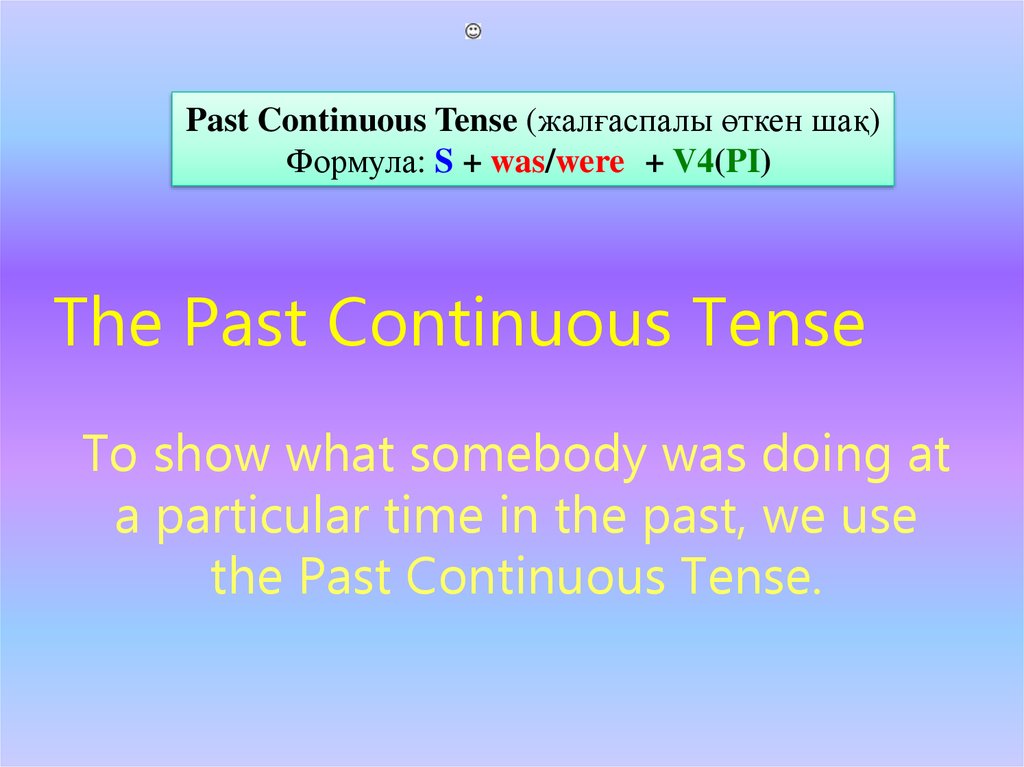
Before we look at 6 specific examples of how and when to use the past continuous, let's review the structure so you use the tense accurately. The structures for the past progressive tense are as follows: Positive: Subject + [was/were] + verb [ing] I was planning to call you but lost track of time. Negative: Subject + [was/were] + not verb [ing]
20 Examples of Past Continuous Tense Sentences

The past continuous form of "go" is "was going" or "were going," depending on the subject. Learn the Other Verb Tenses. English tenses appear in different verb forms. The past continuous tense uses "was/were" and the -ing form of the verb. Use the past continuous or progressive tense to show two ongoing events in the past.
Past Continuous Tense Definition, Useful Rules and Examples • 7ESL

These are generally verbs about states rather than feelings. We use the past continuous tense in these ways: with a time expression, such as at 6p.m. yesterday, to talk about an action that began before that time and finished after it. The exact length of time the action took is not important.
Past Continuous Tense, Definition and Examples English Grammar Here

2: In the same way, we can use the past continuous for the background of a story. (We often use the past simple for the actions.) This is really a specific example of Use 1. The birds were singing, the sun was shining and in the cafés people were laughing and chatting. Amy sat down and took out her phone. 3: Temporary habits or habits that.
Past Continuous Tense Rules And Examples 13 Tenses English, English

Revised on October 23, 2023. The past progressive tense is a verb form used to refer to an action that was ongoing at a time in the past. The past progressive is formed using the past tense of the auxiliary verb "be" (i.e., "was/were") along with the present participle ("ing" form) of a main verb (e.g., "I was thinking").
The Past continuous tense a detailed guide in 2021
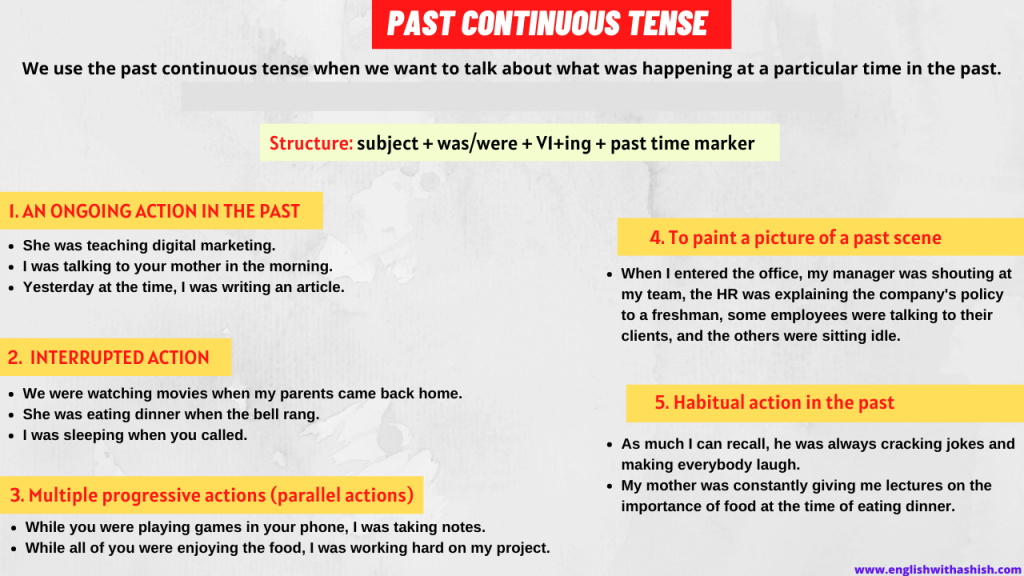
Here is the formula to form the negative past continuous tense: Subject + was/were + not + verb + -ing. Here are some examples: I was not studying for my exam yesterday. They were not working on the project last night. She was not cooking dinner when I arrived home. We were not watching TV at that time.
Past Continuous LEARNING ENGLISH
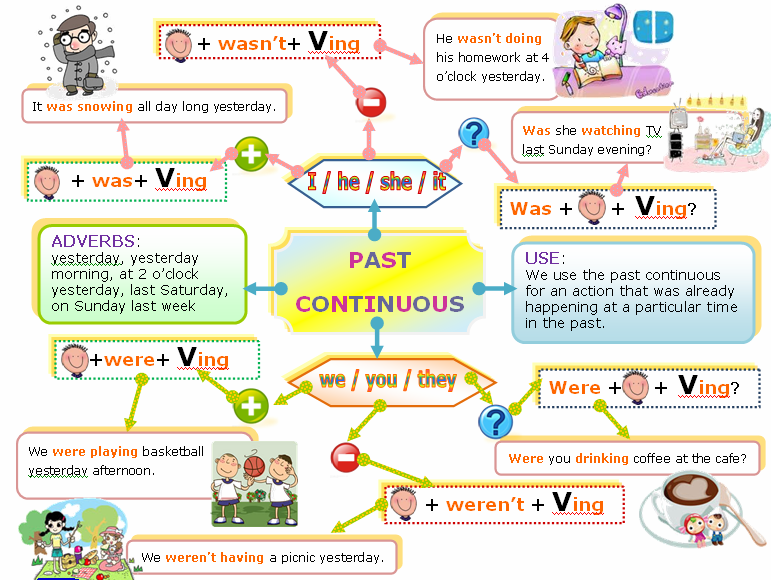
Past continuous tense (past progressive tense) is a verb tense that describes a continuing past action at a specific time. It it used to talk about an ongoing and uncompleted action at a particular moment in the past. The auxiliary verbs are " was " and " were ". The verbs always have " -ing " at the end.
When to Use the Past Progressive Tense
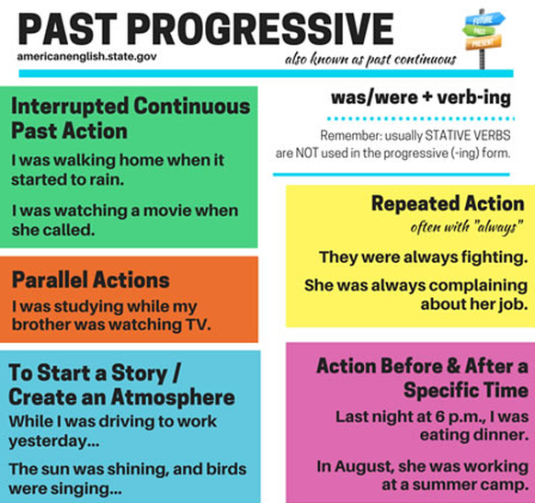
The Past Continuous tense is an important tense in English. We use it to say what we were in the middle of doing at a particular moment in the past. In this lesson we look at the structure and the use of the Past Continuous tense, followed by a quiz to check your understanding. Note that continuous tenses are also called progressive tenses.
Past Continuous
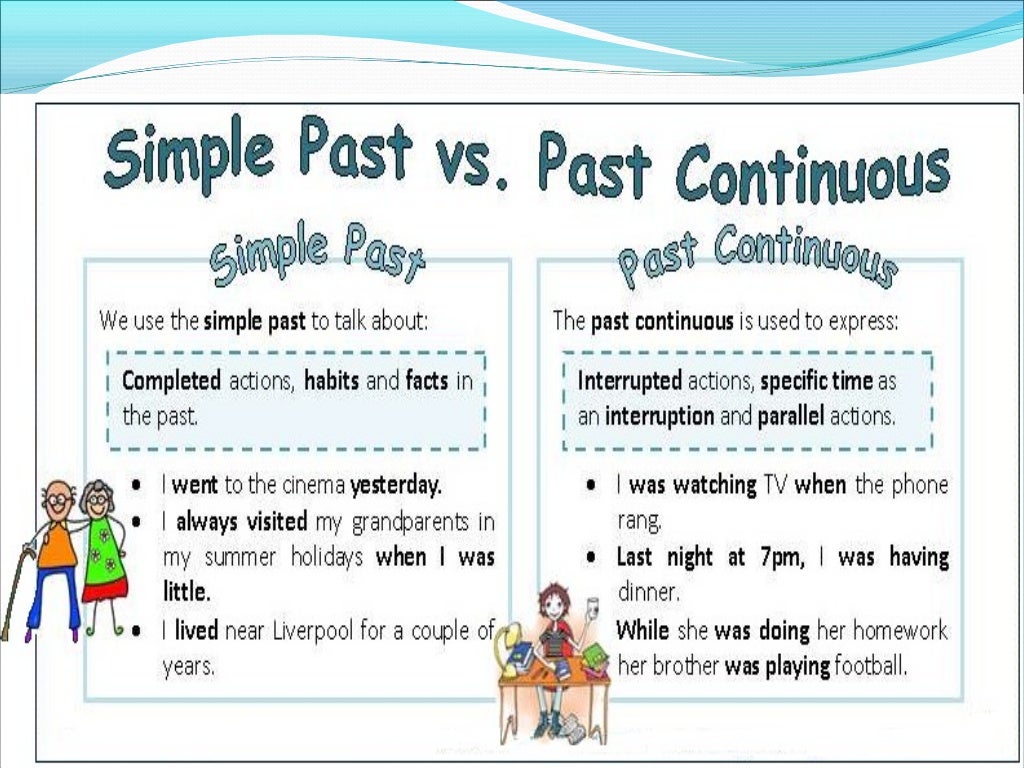
You use Past Continuous to emphasize the length of action in the past . They were arguing the whole evening. /emphasis on the length — the whole day/. She was relaxing from 6 pm to 9 pm yesterday. /emphasis on the length — from 6 pm to 9 pm/. You use Past Continuous for background description in a story .
Past Continuous Tense English Grammar

Past continuous ( I was working ) - English Grammar Today - a reference to written and spoken English grammar and usage - Cambridge Dictionary
Past Continuous Tense How and When to Use It, With Examples

2 Ongoing actions at a specified time. When you mention an exact time in the past, use the past continuous tense if the action started before that time and continued afterward. If the action begins at the time mentioned, use the simple past instead. Past continuous tense examples: